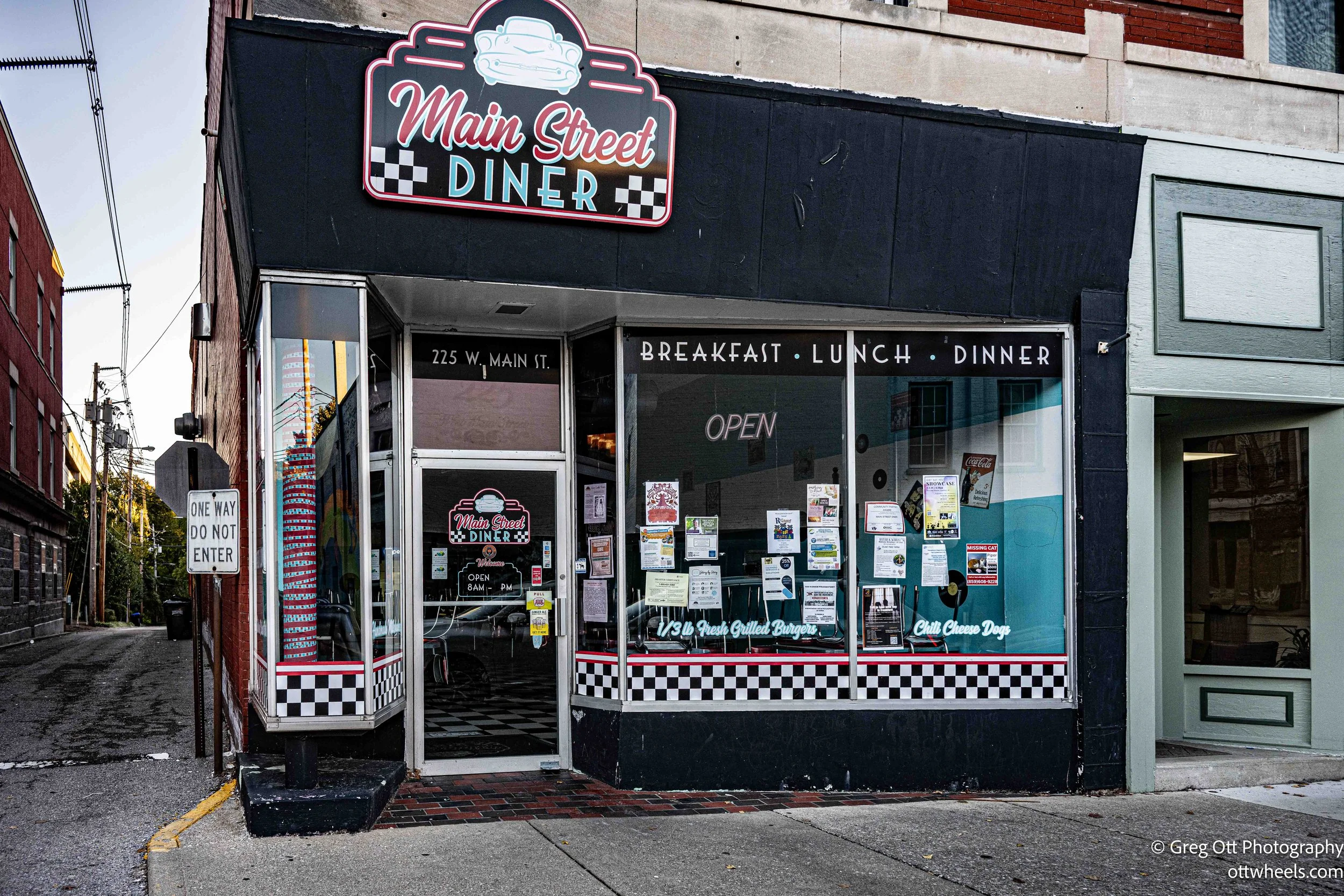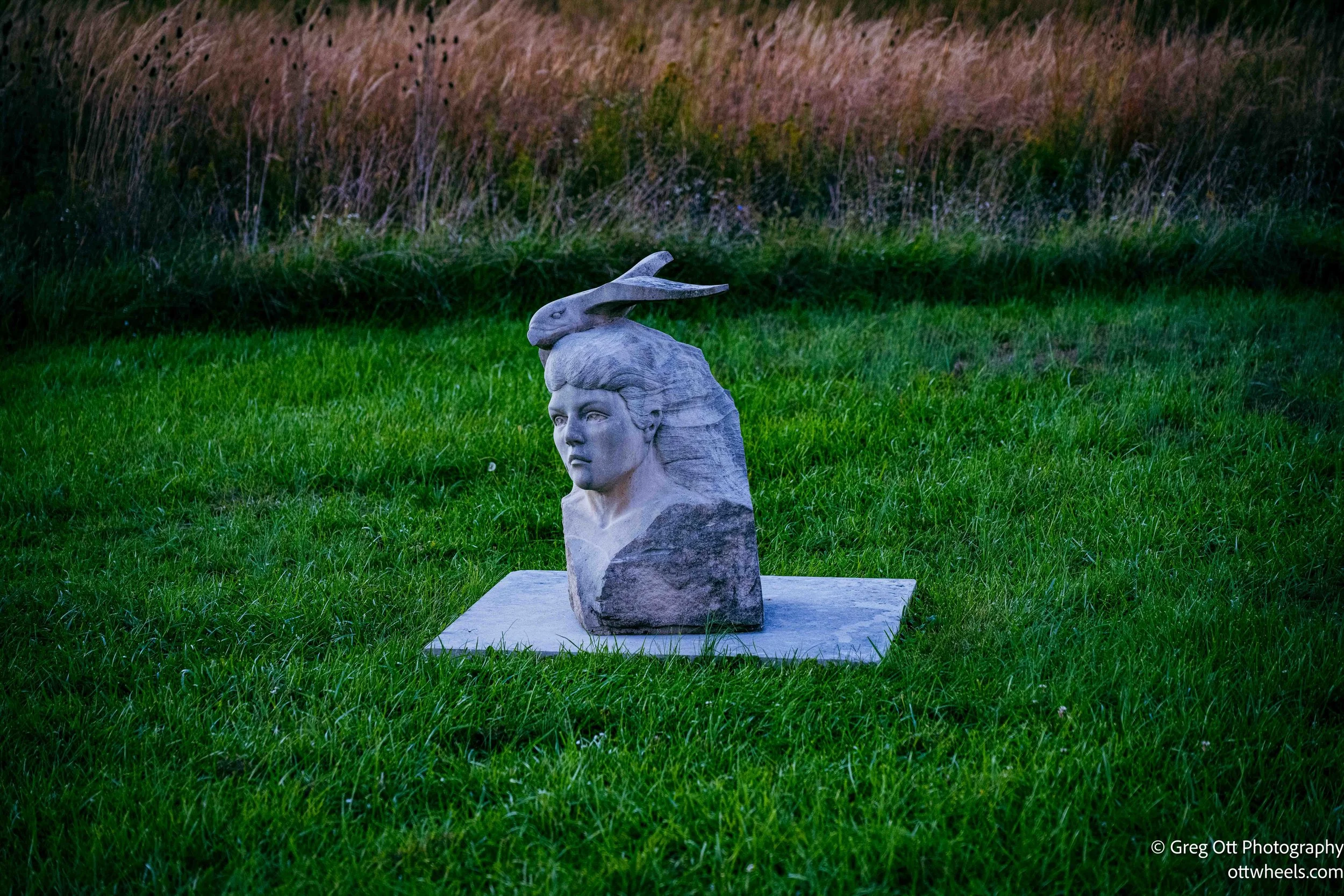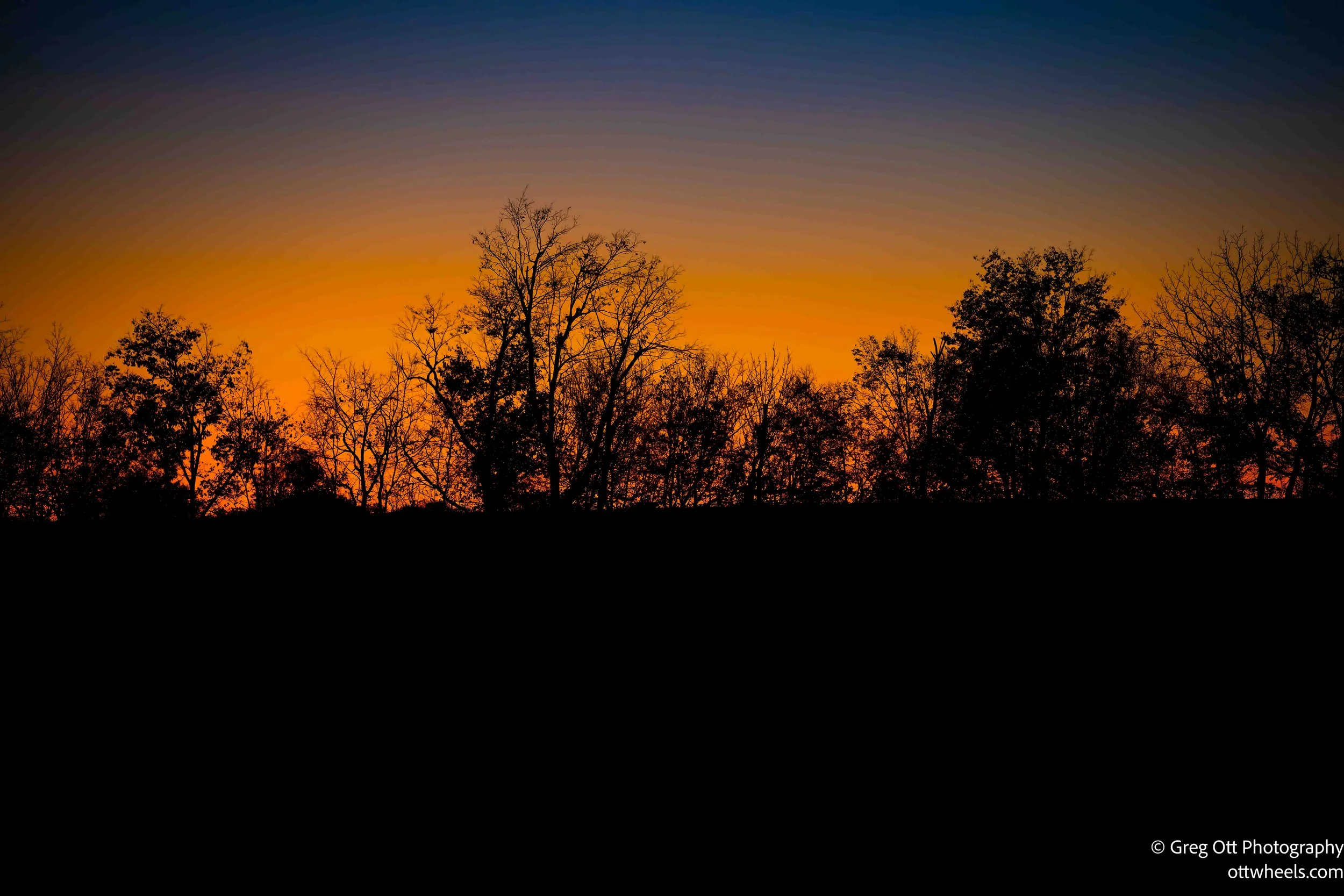Frankfort, KY - Capitol City
I started my morning at Engine House Coffee, a bright café set inside Frankfort’s original 1868 fire station. The old Engine House once sheltered the city’s first steam fire engine and crews who lived upstairs, ready to respond to calls from the growing downtown. After decades of use and decline, the building was restored and reopened as a coffeehouse—a project that earned local preservation awards. Sitting inside, it’s easy to imagine the clang of alarms giving way to the low hum of conversation and the hiss of an espresso machine. The brick walls and iron beams still carry the marks of their working past. There’s and exhibition with photos on the wall.
Frankfort itself has a deeper story than most small capitals. The town began as a river crossing called Frank’s Ford, named after pioneer Stephen Frank, who was killed there in 1780. When Kentucky achieved statehood in 1792, several towns vied to become the capital. Frankfort won by offering land, cash, and building materials for the new Capitol. Fires, floods, and even a Confederate occupation later tested the city, but it always rebuilt. Today, with just over 30,000 residents, it remains the fifth smallest state capital in the country. Beyond government, Frankfort’s character is shaped by Kentucky State University, founded in 1886 as a historically Black college, and by a downtown that still feels human-scaled—brick buildings, river walks, bourbon shops, and cafés like this one that give the city its rhythm.
I drove up to the Kentucky State Capitol, only to find it wrapped in scaffolding for renovation. The dome was fully enclosed, and fences blocked the grounds. A technician named Kent was scanning the exterior with a laser rig to create a 3D digital model. I took a few photos through the gaps in the fence—proof I’d been there—and moved on.
Back in the old downtown, I parked near the Old State Capitol, a limestone Greek Revival building designed by Gideon Shryock in the 1830s. After photographing its columns, I stopped at the visitor center, where they handed me one of the original Rebecca Ruth Chocolates along with a stack of brochures.
Near the Old State Capitol stands a plaque honoring John Brown (1757–1837), a Revolutionary War veteran and Kentucky’s first U.S. Senator. Born in Virginia, he served as a private in the Virginia militia before studying law and moving west. Brown helped secure statehood for Kentucky and later built Liberty Hall, one of Frankfort’s best-known homes. His work shaped the early government of the Commonwealth, and though he shares a name with the later abolitionist John Brown of Harpers Ferry, the two were unrelated—separated by a generation and a very different kind of revolution.
Across from the Old State Capitol stands the statue of William Goebel, one of Kentucky’s most controversial governors. Goebel was a fiery Democrat and reformer who fought powerful railroad interests and pushed for laws to curb corporate influence. After a bitterly disputed 1899 election, violence broke out in Frankfort. On January 30, 1900, as Goebel walked toward the Capitol, he was shot by an unknown assassin. He was sworn in as governor while lying in his sickbed and died four days later, the only U.S. governor ever assassinated in office. Some saw him as a champion of ordinary people; others thought his political ambition made him dangerous. More than a century later, his statue stands within sight of where he fell—both a memorial and a reminder of how divided Kentucky politics once was.
Lunch was at the Main Street Diner, a simple spot painted blue with record albums on the walls. I ordered a spinach and bacon salad. The waitress looked at me and laughed. “What’s that?” she asked. I pointed at the menu. “Been here three months,” she said, “and nobody’s ever ordered that.”
After lunch, I walked to Rebecca Ruth Chocolates, the century-old candy maker famous for its bourbon balls. Founders Rebecca Gooch and Ruth Hanly Booe started the business in 1919, at a time when banks refused to loan money to women. A local woman finally lent them $400, which they repaid within months—with interest. Their invention of the bourbon ball became a Kentucky classic, and the company still operates from Frankfort today.
I skipped the factory tour but sampled more chocolate, bought a few gifts, and enjoyed an espresso outside. A couple from Tennessee joined me for a while, swapping road stories. When I went back in to collect my package, a young woman with bright red hair handed it over. I asked the color. “Manic Panic Red,” she said, smiling.
From there I walked to the Ziegler House, designed in 1910 by Frank Lloyd Wright. It’s a subtle example of his Prairie School style—low lines, overhanging eaves, and open flow between rooms. The house sits quietly among traditional homes, and unless you’re looking for it, you might miss it entirely.
Next, I walked to the Flower Clock, built in 1961 behind the Capitol. Funded by the Frankfort Garden Club and the state park system, it was constructed by the same company that made the mechanism for Big Ben. The clock spans 34 feet across, with thousands of flowers planted to form the face each season—a mix of artistry and engineering that’s become one of Frankfort’s best-known landmarks.
Circling the Capitol grounds, I passed the Governor’s Mansion, built in 1914 in the Beaux-Arts style, modeled after the Petit Trianon at Versailles. It has more than 25 rooms and over 25,000 square feet of space. The house was decorated for Halloween, and I paused for a few quick photos before finishing my loop.
By then I’d walked nearly five miles. I went back to the van for a long break in the van.
I headed out near the Old State Capitol. The light on the building in the late afternoon was completely different than when I arrived.
I continued downtown for late afternoon photos.
Reflections in windows
While I was attempting to grab some window reflection a couple, Shawn and Treasure, were walking up the street. She asked what I was photographing. We talked for a bit and I asked for their photo. Shawn is a freelance photographer and works with ESPN for college sports events. They were full of energy and fun to talk to.
Historic Buildings
While exploring, I learned that Dolley Madison’s sister, Lucy Payne Todd, once lived here. She married Supreme Court Justice Thomas Todd, a Frankfort native and one of the early members of the U.S. Supreme Court. Their 1812 wedding was the first ever held in the White House, hosted by Dolley herself. Just a few nights earlier, I’d watched a documentary on the War of 1812 on Amazon Prime, which made the connection feel immediate—the same conflict that later led to the British burning the White House. Both sisters, by coincidence, had married men named Todd, though from unrelated families: Dolley’s first husband, John Todd Jr., died in the 1793 yellow-fever epidemic, while Lucy found her home in Kentucky. It’s a small but fascinating thread that ties national history to this quiet river town.
A Shutdown Bridge
Art Work
There was a city-wide street art show with installations scattered around the town and plaques providing details.
Josephine Sculpture Park
As daylight disappeared, I drove south toward Harrodsburg. On the way out of town, I spotted the Josephine Sculpture Park and couldn’t resist stopping. The park is free and open from dawn to dusk; though the sun was already down, I managed a few photos before losing the light.
What a wonderful unplanned day. The capitol may be closed for five years, but Frankfort, Kentucky, is still a small, vibrant town with plenty to explore. As the sun set, I found myself driving along a quiet back road on my way to Walmart.
I reached Walmart around 8 p.m., picked up groceries, and finally found an ice tray so I could start making smoothies again. It turned out to be one of the quietest Walmarts I’ve stayed at—friendly people, calm parking lot, no late-night noise. After a full day of walking and exploring, I was ready for some quiet.













































